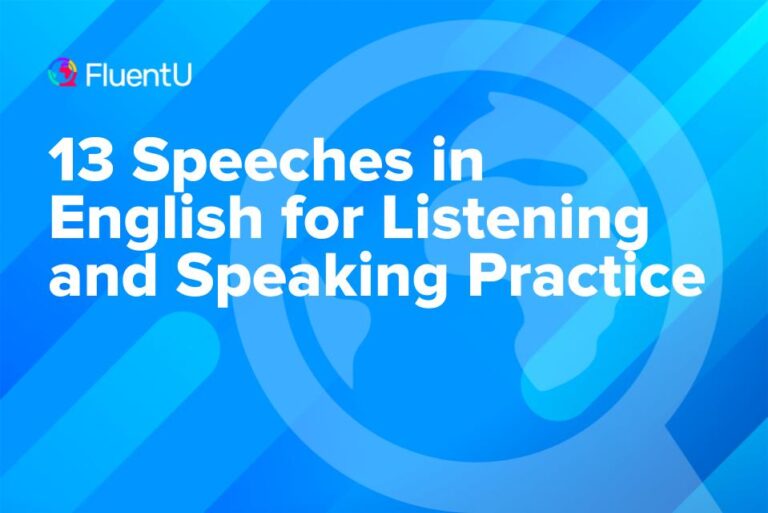Contents
- 1. Memorize 3 Fundamental Capitalization Rules
- 2. “I” and “Me” Aren’t Interchangeable
- 3. Be Careful When Using “Your” and “You’re“
- 4. Be Careful When Using “Their“, “They’re” and “There“
- 5. There’s a Subtle Difference Between “Must” and “Have To“
- 6. “Make” and “Do” can be a very tricky couple
- 7. Always Check for Subject and Verb Agreement
- 8. Mix It Up with Active and Passive Voice
- 9. For Collective Nouns, Context Is Everything
- 10. Always Use Complete Sentences, Not Sentence Fragments
- 11. Learn Some Question Tags to Simplify Your Life
- 12. Use Dangling Prepositions and Avoid Dangling Participles
- And One More Thing...
Top 12 English Grammar Tips to Avoid Common Mistakes in English

Studying English grammar isn’t always fun, yet we all keep learning and practicing the English grammar rules because it’s important for writing, speaking and comprehension.
In these 12 English grammar tips, we covered common errors that English learners encounter and how you can avoid these mistakes. From learning the fundamentals of capitalization to understanding the nuances of pronouns—mastering these can help you come out on top in the trickiest situations.
Download: This blog post is available as a convenient and portable PDF that you can take anywhere. Click here to get a copy. (Download)
1. Memorize 3 Fundamental Capitalization Rules
You may think that capitalizing nouns is a trivial (not important) grammar rule. However, poorly capitalized words are a quick giveaway that you haven’t quite mastered English writing. Proper capitalization helps your writing look professional, tidy and correct.
It’s really just a matter of memorizing key English writing rules to apply proper capitalization and there’s not much to memorize.
Here are the three fundamental rules you can use to remember which words get capitalized in English:
- The first word in a sentence. You should always capitalize the first word in a sentence regardless of what type of word it is.
- Proper nouns (names). These include the names of people, locations, places, days and months, companies, etc. For example: Matthew, Helen, France, Tokyo, Mississippi, Microsoft, Saturday, January…
- Honorifics and titles, as well as their abbreviations. Mr., Mrs., Ms., Miss, Doctor (Dr.), President, Lord, etc.
For more examples, Towson University has a comprehensive list of words that get capitalized in English.
2. “I” and “Me” Aren’t Interchangeable
Which one of the sentences below do you think is grammatically correct?
If you guessed the first sentence, you’re right! However, don’t stress out if you guessed wrong. Many native English speakers get this rule confused.
I and me aren’t interchangeable and are used in different grammatical constructs:
- I is a pronoun that serves as a subject of a sentence. In the first example, Matt and I went for a walk, both I and Matt are subjects of the sentence while went is the verb.
- Me is a pronoun that serves as an object of a sentence. Me is needed when someone else is performing the action. To use the example above, it would be absolutely correct to say: Matt took me for a walk. Matt is the subject and me is the object in the sentence.
Knowing your subjects and objects will help you use these types of pronouns flawlessly!
3. Be Careful When Using “Your” and “You’re“
This is probably the most common mistake on the internet today! Mistakes happen when possessive pronouns are confused with verb contractions, even among native English speakers.
Often, you may see phrases like your wrong (instead of you’re wrong), you’re sister (instead of your sister), etc.
Your and you’re sound absolutely the same, but they have very different meanings and uses.
Your is a possessive determiner that attributes something to you:
Your friends have reserved a table for the party.
You’re is a contraction of you are:
You’re nice to me. (You are nice to me.)
You’re going to a party. (You are going to a party.)
If you want even more examples of this tip in action, you can try the FluentU language learning program.
FluentU takes authentic videos—like music videos, movie trailers, news and inspiring talks—and turns them into personalized language learning lessons.
You can try FluentU for free for 2 weeks. Check out the website or download the iOS app or Android app.
P.S. Click here to take advantage of our current sale! (Expires at the end of this month.)

4. Be Careful When Using “Their“, “They’re” and “There“
This is another case of confusion between pronouns, contractions and adverbs. Let’s analyze each of the words in question.
Their is a possessive determiner. When using their, you indicate that something belongs to them:
Their dinner party was a big hit.
They’re is a contraction of they are, very similar to you’re from tip number three:
If they’re not coming, I’m leaving early. (If they are not coming, I’m leaving early.)
They’re so happy to have been invited! (They are so happy to have been invited!)
There is an adverb indicating a location of something, whether specific or abstract:
Your keys are over there, on the table.
When we got there, the place was already closed.
This fun comic by The Oatmeal provides a few more examples of common errors arising from the confusion between contractions and pronouns.
5. There’s a Subtle Difference Between “Must” and “Have To“
Modal verbs in English serve to indicate likelihood, possibility, obligation and more. The most common examples of modal verbs include can, may, must, will and shall.
Must is the one indicating an obligation or a necessity to do something:
I must wake up early to catch a morning train.
We must understand the difference between “there” and “their” to be better English speakers.
However, we could also say:
I have to wake up early to catch a morning train.
We have to understand the difference between “there” and “their” to be better English speakers.
Both are grammatically correct and the difference between must and have to is subtle. Both refer to an obligation, but must indicates an opinion or suggestion. Have to is an expression of a more objective obligation coming from an outside force.
So saying that someone must do her homework is your opinion. Saying that she has to do her homework signals that it’s necessary because, for example, her teacher requires it.
Must and have to are used interchangeably in casual English. In more formal situations, you’ll stand apart by knowing the difference between them.
6. “Make” and “Do” can be a very tricky couple
Many English learners struggle when they have to learn the difference between make and do because there’s no standard rule to tell them apart (see or identify the differences).
Normally, we use make when we mean to produce, construct or create:
She doesn’t like making friends.
On the other hand, do tends to be a more active verb, and it’s often followed by an action or activity:
I’d like to do some exercise this afternoon.
However, there are exceptions to these two general rules, and both verbs appear in many collocations you need to learn by heart.
7. Always Check for Subject and Verb Agreement
To approach fluency in English, it’s crucial to understand subject-verb agreement. The subject of a sentence can be either singular or plural, which will determine what form the verb takes.
For example:
These are simple sentences with one clause (subject plus verb). But when there’s more than one subject connected by and, it’s a compound subject that requires a plural:
Lily and Tom want to order pizza. (They want to order pizza.)
Matt and I are going for a walk. (We are going for a walk.)
But here’s where things get really complicated. Sometimes the subject is accompanied by an additional piece of information that follows along with, together with, as well as, such as and more.
These don’t change the subject into a compound subject and don’t require a plural verb:
Lily, just like Tom, wants to order pizza. (She wants to order pizza. So does Tom.)
I, together with Matt, am going for a walk. (I am going for a walk. Matt is going with me.) Note that this is a slightly awkward sentence, and using a compound subject like Matt and I would be preferable here.
Notice how these sentence elements provide additional information that can be safely removed. The sentence would be less informative, but still grammatically correct.
A simple way to check for subject and verb agreement is to replace the subject with an appropriate pronoun like we did in the first sentence above:
Lily, just like Tom, wants to order pizza. (She wants to order pizza.)
Lily and Tom want to order pizza. (They want to order pizza.)
If the sentence still makes sense, your subject and your verb are in agreement.
8. Mix It Up with Active and Passive Voice
In many English sentences, the subject is the one performing the action described by the verb of the sentence. This is called “active voice”, for example:
While the children played a game in the backyard, their dad prepared dinner.
Both clauses of this sentence contain active voice: children played (a game) and their dad prepared (dinner).
In other instances, the subject is being acted upon. Someone else is performing the action. This is “passive voice”:
While a game was played by the kids, dinner was prepared by their dad.
This sentence also has two clauses, and both of them are written in the passive voice: the game was played (by the kids) while dinner was prepared (by their dad).
A good mix of active and passive verbs will make your English, especially written English, varied and colorful.
9. For Collective Nouns, Context Is Everything
Sometimes, a singular noun represents a group of people or a collection of things. Is family singular or plural? Is government plural or singular? How about crowd or flock?
These types of nouns are known as collective nouns.
In American English, collective nouns typically take a singular verb. For example:
The American government is voting on this issue today.
There are two important exceptions that you’re likely to encounter in casual conversation: police and people.
Police and people always take a plural verb.
The Boston Police make weekly reports on the matter.
People are starting to wonder what’s going on.
However, in British English, collective nouns may take a singular or a plural verb, depending on the rest of the sentence. If the collective noun represents a group acting as one unit, it takes a singular verb. If the collective noun stands for several individuals or things acting independently, it takes a plural verb.
For example:
The visiting team is losing. (The team is one unit that’s on the losing side of the game.)
My family are all coming to the wedding. (“Family” stands for several different people who’ll arrive at the wedding, not necessarily together.)
Whether you treat a collective noun as a singular or a plural, make sure that it stays that way.
Incorrect: The team is on a winning streak. They beat every other team so far.
Correct: The team is on a winning streak. It beat every other team so far.
10. Always Use Complete Sentences, Not Sentence Fragments
The most basic sentence in English has two elements: a subject and a verb, for example: she sings, I write, they survived.
Having a subject and a verb is the minimum requirement for English sentences. If either of those is missing, the sentence isn’t complete. It becomes a sentence fragment instead:
Walking past the house
Survived the ordeal
Sentence fragments shouldn’t be used alone. The examples above can be easily made into full sentences or become part of a longer sentence. For example:
Walking past the house, I noticed the lights were on.
She is happy to have survived the ordeal.
Make it a rule for yourself to always write in complete sentences. Connecting sentence fragments into more complex sentences will make your English speech and English writing correct and varied.
If you want to learn m0re about English abbreviations, check out this blog post:
English Abbreviations: What They Are, How They Work and Common Examples | FluentU English Blog
English abbreviations are one kind of words that you’ll always be learning in English, there’re hunders of them! This blog post is an essential guide to English…
11. Learn Some Question Tags to Simplify Your Life
You know those short questions that sometimes get added to the end of a sentence, don’t you?
These are called question tags, and they can make your life easier, especially in an English conversation, because they allow you to easily turn statements into yes or no questions.
The rule for forming a question tag is simple: if the main verb of the sentence is positive, the question tag takes its negative form. If the main verb of the sentence is negative (has “not” in it), the question tag takes its positive form.
A question tag will always conform to the main verb of the sentence:
She forgot her lunch, didn’t she? or She didn’t forget her lunch, did she?
He isn’t going to the party, is he? or He is going to the party, isn’t he?
However, here’s one tricky thing to remember: if the main verb of the sentence is “I am,” the question tag that corresponds is “aren’t I.”
I am going to have to change my plans, aren’t I?
If you don’t feel like using a contraction to form a negative question tag, be careful with the placement of “not.”
She forgot her lunch, did she not?
He is going to the party, is he not?
Need more examples? The British Council explains the basics of question tags with additional examples provided.
12. Use Dangling Prepositions and Avoid Dangling Participles
Whenever a preposition gets separated from its object in the sentence (or when it doesn’t have an object at all), it becomes a dangling preposition, for example:
You can come downstairs; there’s nothing to be afraid of.
There is a grammar myth that dangling prepositions are unacceptable. However, dangling prepositions aren’t a grammatical error.
Actually, avoiding dangling prepositions may result in some awkward sentences! For example:
To whom are you talking?
You can come downstairs; there’s nothing of which to be afraid.
These sentences are correct, but not very desirable. Also, dangling participles can cause problems for English learners; they can make it easier to forget or confuse the subject-participle relationship.
Participles (words formed from verbs) are often used to introduce a subordinate clause in a sentence, for example:
Doing my homework, I noticed that a few of my notes were missing.
That little girl, having dropped her ice cream, is crying uncontrollably.
In these cases, participles always relate to the subject of the sentence. They describe the action that the subject performs or the state that the subject is in.
A very common mistake many English learners (and even native speakers!) make is to use a participle that doesn’t relate to the subject of the sentence (a dangling participle), for example:
Incorrect: Walking to the university, the rain started to fall, so he opened his umbrella.
Correct: Walking to the university, he opened his umbrella, because the rain started to fall.
Incorrect: Having traveled around the world, few countries impressed me more than New Zealand.
Correct: Having traveled around the world, I was impressed by few countries more than New Zealand.
As you can see, dangling participles create confusing and grammatically incorrect sentences that reflect poorly on your writing. Unlike dangling prepositions, dangling participles should be avoided!
English grammar may not be your favorite part of English learning, but don’t be discouraged.
Taking it step by step, one tip at a time is how you become proficient in the language.
Good luck!
Download: This blog post is available as a convenient and portable PDF that you can take anywhere. Click here to get a copy. (Download)
And One More Thing...
If you like learning English through movies and online media, you should also check out FluentU. FluentU lets you learn English from popular talk shows, catchy music videos and funny commercials, as you can see here:
The FluentU app and website makes it really easy to watch English videos. There are captions that are interactive. That means you can tap on any word to see an image, definition, and useful examples.
For example, when you tap on the word "searching," you see this:
Learn all the vocabulary in any video with quizzes. Swipe left or right to see more examples for the word you’re learning.

FluentU helps you learn fast with useful questions and multiple examples. Learn more.
The best part? FluentU remembers the vocabulary that you’re learning. It gives you extra practice with difficult words—and reminds you when it’s time to review what you’ve learned. You have a truly personalized experience.
Start using the FluentU website on your computer or tablet or, better yet, download the FluentU app from the iTunes or Google Play store. Click here to take advantage of our current sale! (Expires at the end of this month.)










